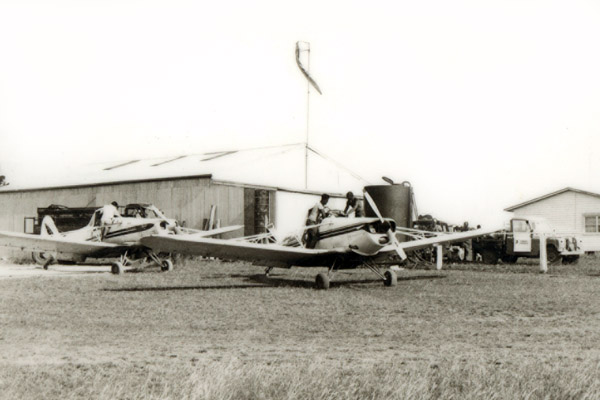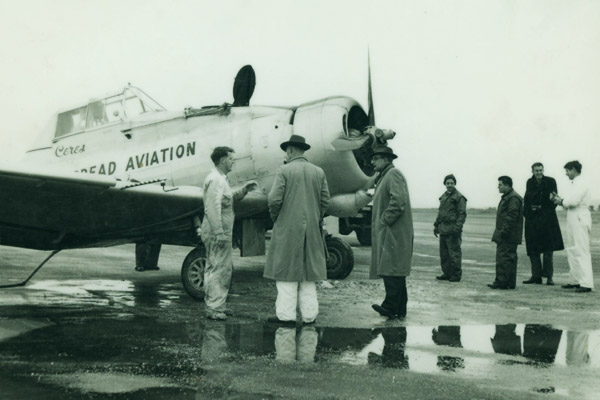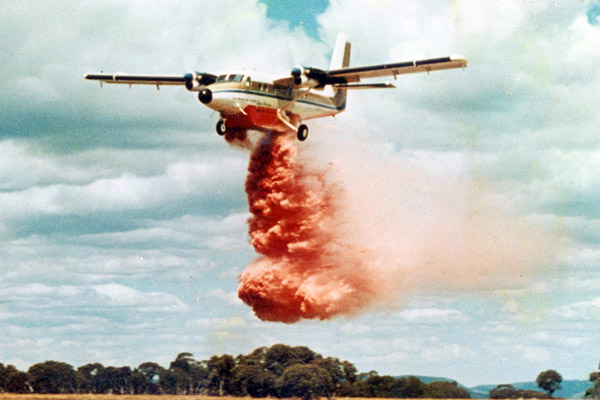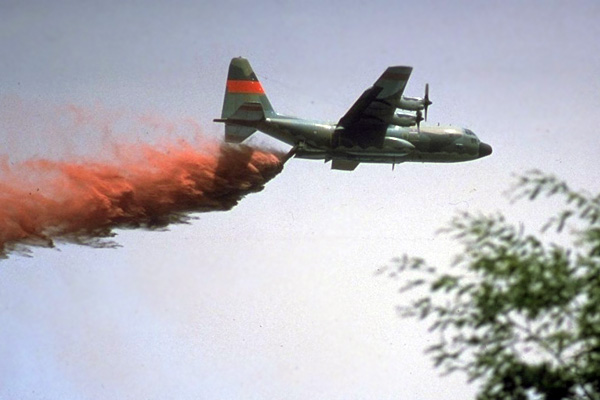Firebombing
Firebombing has been an important wildfire suppression technique in forest fire fighting in Victoria since 1967.
This introductory article comes from a 1987 paper by Athol Hodgson for The Fireman.
The complete paper is available here, and extracts from the article are provided below.
See also this article.
"The first trials of using aircraft to attack fires in Australia were conducted in Victoria in 1939 when brine solution was dropped in cartons. Further trials were conducted in Victoria in 1946/47 using military aircraft to drop chemicals in metal tanks which were designed to burst on impact."
"In 1958, NSW fire authorities trialled a Tiger Moth crop duster to drop water on grassfires and sodium calcium borate on grass fires burning beneath low open scrub. The results were not encouraging although the NSW Fire Control Officer at the time, (H.R. Luke), commented that the technique could not be discounted."
"In 1964, the FCV experimented with dropping water thickened with bentonite clay from a Ceres aircraft. This was followed in 1965 using a Piper Pawnee to drop chemical retardant. The work included lighting experimental fires which were allowed to burn into the "footprint". It established that chemical retardant concentrations of 0.25 to 1.5 litres per square metre could be applied to ground fuel through a forest canopy and that it stopped a fire burning with an intensity of approximately 600 KW/m. These results were encouraging enough for the FCV to establish a fully operational firebombing system."
"The first recorded instance of the operational use of aircraft to attack a wildfire in Australia was in 1967 when two Piper Pawnees dropped chemical fire retardant on a small fire in remote mountain country near Benambra in north-eastern Victoria."
"In 1970 (the paper says "1971" but the FCV Annual Report for 1969/70 indicates the correct year was 1970) a larger aircraft, a Twin Otter from Canada, was tested at Snowy Range, and then in 1981/82 and 1982/83 a RAAF C130 Hercules fitted with MAFFS was extensively trialled."
"In the 20 years since that event the technique has been developed to the stage where the current Victorian forest fire service (Department of Conservation, Forest and Lands) frequently uses agricultural aircraft to drop chemical retardants on fires in remote forests, and helicopters to drop water or chemical retardants to support ground crews working on wildfires."

Benambra Firebombing Base
1968
Source: B Rees

FCV Retardant Trial at Ballarat with Ceres Aircraft. (l to r) Athol Hodgson, Val Cleary, Ted Gill
1964
Source: B Rees

Twin Otter Drop Trials - Snowy Range
1971
Source: B Rees

RAAF C130 Hercules with MAFFS at Mt Hickey
8/2/1982
Source: B Rees
